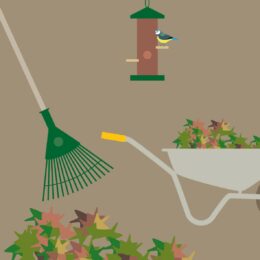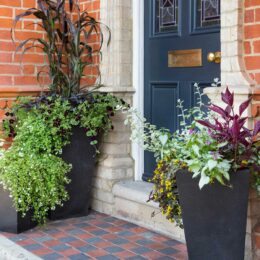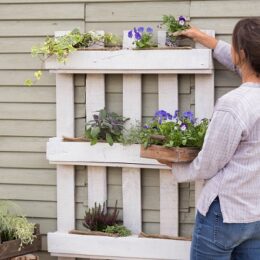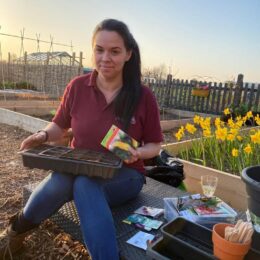Home composting is an environmentally friendly way of dealing with kitchen and garden waste. Although councils offer green waste collections, home composting is more beneficial as it does not involve heavy transport, and its associated environmental costs. As well as a better way to get rid of grass cuttings, hedge trimmings, and weeds, creating your own compost and using it in the garden is an excellent money-saving way to improve your garden soil.
You can compost all year round, by topping up using suitable garden and household food waste. However late summer to early winter is the peak time for making compost.
Getting set up:
Choose a suitable space in the garden, it is common to have it tucked away behind a garage or at the bottom of the garden behind a shed or screen. A part or full shady position is best as it is important to keep the temperature and moisture level consistent – the micro-organisms (bacteria and fungi) that convert the waste to compost work best in constant conditions.
You can purchase a purpose-made bin or alternatively, why not create your own? It is possible to create compost in simply a heap but using something to contain it in such as pallets or spare wood panels, will keep it all neatly tidied away and help retain a good temperature and moisture level.
It is a good idea to have an earth base to allow drainage and access to soil organisms, but if you have to compost on a hard surface, then you can simply add a spadeful of soil in the bottom.
- Alternate layers of brown and green material for a good balance.
- Brown includes cardboard, wood chips, newspaper, leaves, straw, and plants that have died back.
- Green is uncooked fruit and veg waste, weeds (without seeds), cut grass, leafy plants, etc.
- Avoid dominating the heap with any one material – especially grass clippings.

Top tip: To speed up composting you can add urine (yes really) which has nitrogen in so will help break down woody material. No need if you are happy to wait a bit longer.
Turning the heap
Turning your heap will help add air as this is necessary for composting to occur. Make sure that it isn’t too wet (it just needs to be moist) or compacted as this will slow the process down.
It’s better to place a lot of composting materials on the heap in one go and turn it on a monthly basis to introduce air.
When is the compost ready?
Garden compost can take between six months and two years to be ready to use. It will be dark brown, have a crumbly texture, and smell like damp woodland.
Any un-rotted material can be added to the next heap of composting materials.
Top tip: Cover your bin with carpet to keep it warm – this will help to speed up the composting process. And check that it is moist – you may need to water it lightly in warm weather.
Here are some handy options for getting rid of green waste when you don’t have a ready-made composter at home:
- Dig a hole and fill it with green waste, then cover over with soil and let it rot down.
- Cut grass can be used as a mulch around trees and shrubs.
- Think about leaving some areas of your lawn unmown, or use a longer cut than normal. This will help wildlife and create less green waste.
- Make a pile of sticks and leaves in a hidden corner of the garden – they’ll make a great hiding place for creepy crawlies.









